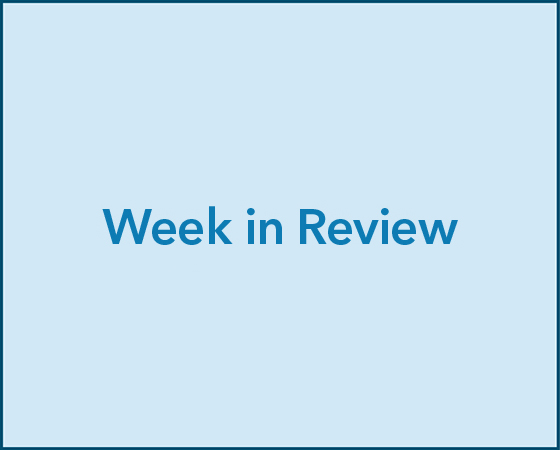Fixed Income Update
Treasury yields moved higher this week, with rates climbing to their highest levels since early September. Shorter maturities led the move, reflecting how closely they track expectations for Federal Reserve policy. The upward pressure came largely from stronger-than-expected data: Thursday’s jobless claims report showed fewer filings than anticipated, easing fears of a rapidly weakening labor market, while second-quarter GDP was reported at 3.8%, comfortably ahead of forecasts.
Still, the labor picture remains far from settled. Just two weeks ago, revisions showed the U.S. economy had created 911,000 fewer jobs than previously reported. More recent monthly gains were equally underwhelming, with increases of only 22,000 in June, 79,000 in July, and an outright decline of 13,000 in August - the slowest three-month average in over four years. It was this deceleration that prompted the Fed to cut rates last week for the first time in nine months. While this week’s data offered some reassurance, a clearer signal will likely come with next Friday’s September employment report.
Markets adjusted quickly to the shifting tone. At the start of the week, futures implied a 94% probability of another quarter-point cut at the Fed’s October 29 meeting. By Friday, that probability had fallen to about 83%. Policy commentary did little to narrow the range of views. Stephen Miran, the Fed’s newest governor, reiterated his belief that the neutral rate is falling and advocated for aggressive easing of 150–200 basis points. Vice Chair Michelle Bowman suggested inflation was close enough to target to justify further cuts, while Kansas City Fed President Jeff Schmid signaled that additional easing may not be needed. Dallas Fed President Lorie Logan added to the uncertainty with remarks suggesting the Fed should consider moving away from the federal funds rate as its primary policy benchmark. Rarely has the divergence of opinion among policymakers been this wide, leaving the policy outlook highly uncertain.
Supply dynamics also contributed to this week’s move in yields. September proved to be the busiest issuance month of the year, with nearly $197 billion in new investment-grade corporate supply. Oracle’s $18 billion deal was the highlight, drawing demand of nearly $88 billion at its peak. The Treasury also brought $183 billion in new coupon-bearing notes to market. The combined wave of corporate and government issuance added another layer of upward pressure to rates.
As of September 26, 2025
|
Index |
Current |
Last Week |
Wk Chg |
Last Year |
Yr Chg |
|
Tax-exempt MMF |
2.67% |
2.64% |
.03% |
3.29% |
-.62% |
|
Taxable MMF |
4.12% |
4.28% |
-.16% |
4.91% |
-.79% |
|
2-Year Treasury |
3.65% |
3.57% |
.07% |
3.63% |
.02% |
|
5-Year Treasury |
3.77% |
3.68% |
.09% |
3.57% |
.20% |
|
10-Year Treasury |
4.19% |
4.13% |
.06% |
3.80% |
.39% |
|
30-Year Treasury |
4.76% |
4.75% |
.01% |
4.13% |
.63% |
|
5-Year Exp. Inflation |
2.48% |
2.47% |
.01% |
2.06% |
.42% |
|
2-Year Corporate* |
4.00% |
3.89% |
.11% |
4.06% |
-.06% |
|
5-Year Corporate* |
4.28% |
4.16% |
.11% |
4.14% |
.13% |
|
10-Year Corporate* |
4.89% |
4.80% |
.09% |
4.64% |
.26% |
|
30-Year Corporate* |
5.55% |
5.50% |
.05% |
5.09% |
.46% |
|
2-Year Municipal** |
2.30% |
2.11% |
.19% |
2.39% |
-.09% |
|
5-Year Municipal** |
2.39% |
2.25% |
.14% |
2.44% |
-.05% |
|
10-Year Municipal** |
3.09% |
3.00% |
.09% |
2.76% |
.32% |
|
30-Year Municipal** |
4.51% |
4.50% |
.01% |
3.79% |
.72% |
|
10-Year German Govt Bond |
2.74% |
2.74% |
.00% |
2.18% |
.57% |
|
10-Year U.K. Govt Bond |
4.74% |
4.71% |
.03% |
4.01% |
.74% |
|
10-Year Japanese Govt Bond |
1.64% |
1.63% |
.01% |
.81% |
.83% |
|
10-Year Spanish Govt Bond |
3.31% |
3.29% |
.02% |
2.96% |
.35% |
|
10-Year Italian Govt Bond |
3.58% |
3.53% |
.05% |
3.48% |
.10% |
|
Fed Funds |
4.25% |
4.25% |
.00% |
5.00% |
-.75% |
|
Prime Rate |
7.25% |
7.25% |
.00% |
8.00% |
-.75% |
|
Dollar*** |
$98.22 |
$97.64 |
$0.58 |
$100.56 |
-$2.34 |
|
CRB |
$303.35 |
$298.99 |
$4.36 |
$284.63 |
$18.72 |
|
Gold |
$3,772.40 |
$3,676.00 |
$96.40 |
$2,670.40 |
$1,102.00 |
|
Crude Oil |
$65.84 |
$62.68 |
$3.16 |
$67.67 |
-$1.83 |
|
Unleaded Gasoline**** |
$2.04 |
$1.97 |
$0.07 |
$1.89 |
$0.15 |
Note: Municipal yields are as of the previous business day.
* Composite A
** General Obligation AA+
*** Int'l value of the U.S. dollar (Avg. exchange rate between the dollar and 6 major world currencies).
**** Futures price per gallon

Stock Market Update
Stocks moved lower this week as investors searched for fresh catalysts and pondered the upcoming 3rd quarter earnings season. Last week’s Federal Reserve (Fed) decision to cut interest rates by 0.25% for the first time in nine months was a high point but now there are questions as to the potential magnitude and persistence of future cuts.
During the week, Fed Chair Powell signaled caution during a speech that some asset valuations look “fairly highly valued.” This caused a temporary pullback in stock prices. Fed Chair Powell also reiterated that near-term inflation risks remain tilted to the upside while labor market risks are tilted to the downside and that signs of a softening labor market prompted last week’s rate cut.
The market is on pins and needles as to whether expectations of two more 0.25% rate cuts will occur this year—and further cuts into 2026. Better than expected economic and labor market data in the next couple of months could delay further cuts but if data weakens, the Fed could feel pressure to lower rates further than the current expectations. This will remain a high point for equity investors.
Inflation also remains a focal point. On Friday, the Fed’s favored inflation metric (Personal Consumption Expenditures, or PCE) slowed that August core PCE increased by 0.2% month/month, in-line with expectations and July’s revised 0.2%. Annualized core PCE was up 2.9%, in-line with consensus estimates.
A bright spot came from the technology sector, and specifically artificial intelligence (AI) related companies. On Monday, it was announced that NVIDIA (NVDA) will invest up to $100 billion in OpenAI. There was some scrutiny around the idea of “circularity,” as the company uses its balance sheet to support startups, who in turn use the liquidity to procure AI chips. Nevertheless, for now it was viewed as a positive. Also during the week, OpenAI, Oracle (ORCL) and SoftBank announced plans for five AI data centers for the Stargate project. Finally, President Trump signed an executive order on Thursday, paving the way for TikTock to continue operating in the US (with an extension until January 23, 2026) under a new corporate structure with American companies, one of which will be ORCL.
As of September 25, 2025
|
Index |
Current Week |
Month of Sep. |
YTD |
|
Dow Jones Industrial Avg. |
-0.79% |
1.01% |
9.40% |
|
S&P 500 |
-0.89% |
2.34% |
13.38% |
|
Nasdaq |
-1.08% |
4.39% |
16.49% |
|
MSCI EAFE |
-1.01% |
0.21% |
23.57% |
|
Russell Mid Cap |
-1.34% |
-0.60% |
8.80% |
|
Russell 2000 |
-1.53% |
1.98% |
9.18% |





